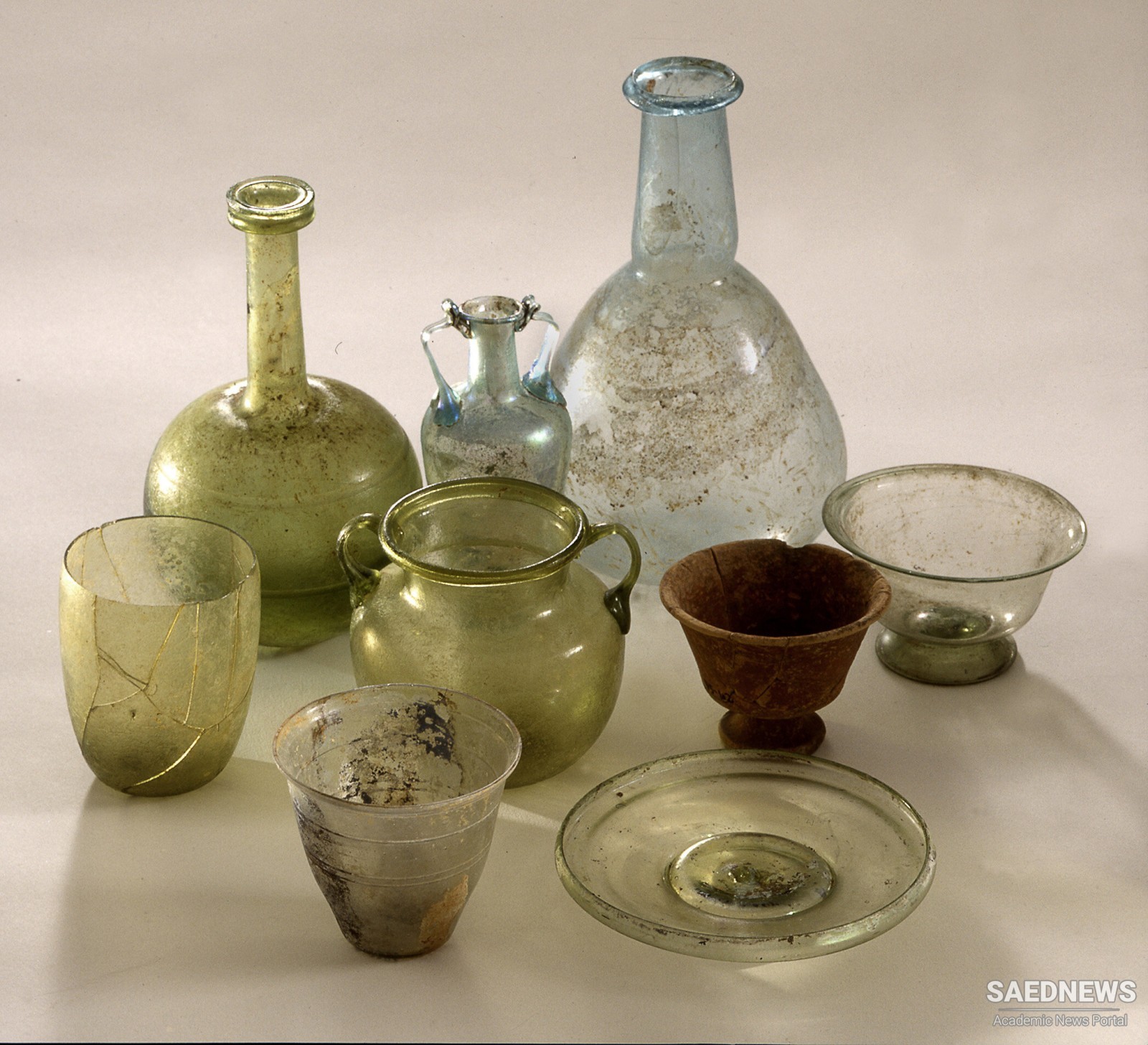It is formed by melting mixtures of various inorganic substances and cooling them in a way that prevents crystallization—the molecules do not, as with most solids such as metals, arrange themselves in regular crystalline patterns. It is in fact more accurate to speak of glass as a rigid liquid than a solid. The basic ingredients of common or soda-lime glass are sand (15 parts), soda ash (5 parts) and lime (4 parts). Instead of sand, the silica could be in the form of quartz or crushed flint. In pre-industrial eras the alkali was provided by the ash of certain plants, fern being particularly preferred.
Primitive man sometimes fashioned naturally occurring glasses such as obsidian, a glassy volcanic rock, into useful objects, like arrowheads. The earliest artificial glass dates from around 4000 BC in Egypt, in the form of a coloured, opaque glaze on beads. During the second millennium BC small hollow vessels could be produced by core moulding. A clay core was covered in successive layers of molten glass and the core scraped or washed out. During the first century BC came one of the technological breakthroughs of the ancient world, the invention of the blowing iron. This made possible the art of glassblowing, either free or into a mould. The art spread rapidly through the Roman Empire and, with tools for decorating the surface of the glass and materials for colouring it, a wide variety of useful and often beautiful ware was produced. In essentials the techniques employed have survived throughout the period of hand-made glass even to this day.
After the collapse of the Roman Empire the tradition of glass-making in its most sophisticated form survived in the Near East and later in Islam. In Europe during the so-called Dark Ages, the tradition remained alive in a simpler form. The compilation of c. 1100 by the German monk Theophilus of Essen, Schedula diversarum artium (Account of various arts), gives details of the glass-making methods in use at the time, including window glass. This was formed by blowing a vessel like a ‘long bladder’, opening it out and flattening it. It was then cut into the required sizes and shapes. Very early ecclesiastical stained glass can be seen in the churches in Ravenna, but it reached its perfection during the Middle Ages. The glory of mediaeval glass is the richness of its colouring, produced by chance combinations of impurities in the colouring materials used. These combinations have long since been lost, so the colours of mediaeval stained glass have hardly been matched.
The Roman glass-making techniques were brought to Europe, possibly as a result of the Crusades, especially to Venice, where the art began to flourish during the thirteenth century. The Venetian craftsmen established themselves on the island of Murano, at first in conditions of strict secrecy; but as their ware became renowned throughout Europe, so knowledge of their materials and methods spread too. Apart from the quality and intricacy of the glass, prized above all was the cristallo, a colourless glass produced, like the Romans before them, by adding to the melt manganese dioxide, which oxidized the iron in the sand to the colourless ferric state.
The furnaces and tools in use during the sixteenth century are described and illustrated in the celebrated De re metallica of Agricola, printed in 1556. The furnaces were in two portions; in the lower the materials were melted in pots from which the glassblower gathered a ‘gob’ of molten glass on his blowing iron. The upper part was the annealing chamber, where the finished ware was allowed to cool slowly, to ease out the strains which would be caused by rapid cooling and result in breakages.
Glass-making was scattered throughout Europe, where the raw materials were to hand, but Venetian clear or ‘cristallo’ glass remained highly prized. The Worshipful Company of Glass Sellers of London commissioned one George Ravenscroft to find a recipe for a comparable glass using local materials. At first he took crushed flint as his source of silica, but this produced numerous fine cracks in the glass, known as ‘crizzling’. To overcome this defect he used increasing amounts of lead oxide and obtained a relatively soft, heavy glass with high refractive index and dispersive power. This made it amenable to deep cutting and this, with its optical properties, produced the brilliant prismatic effects of cut glass. Ravenscroft’s lead glass was patented in 1673 (it has also been called ‘flint glass’ from his original source of silica) and from it was formed the sturdy baluster ware, the later engraved Jacobite ware and the familiar cut glass.


 Striding towards Industrial Development
Striding towards Industrial Development














































